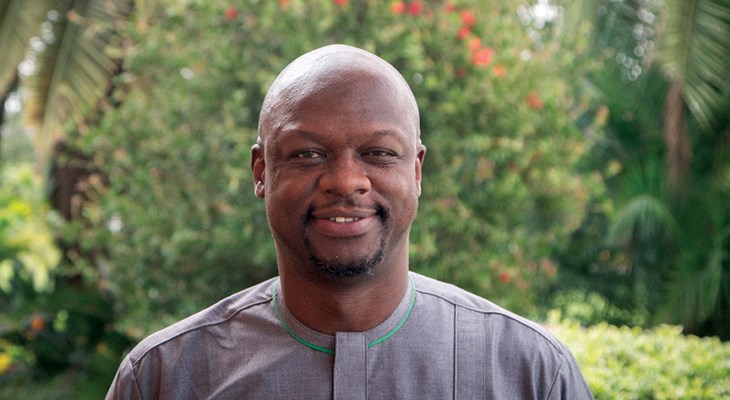Ngu Morcho is on a mission is to end corneal blindness.
With 20 years of experience in early-stage technology development working in Africa and across India and Southeast Asia, Morcho now heads KeraLink International as president and CEO. Founded in 1962 as the Medical Eye Bank of Maryland, the 501(c)3 sold its U.S. eye-banking assets in 2019 to singularly focus on coupling technological advancements and social venture financing strategies to make corneal blindness treatment more accessible and affordable in the developing world.
It’s a mission close to Morcho’s heart, as he has a brother who needed a transplant because of an accident.
“I grew up with it,” Morcho says. “He was eight years old when he had his accident, and a pencil poked his eye in Africa. We moved to the U.S. and he’s had two transplants and is a candidate for a third. What KeraLink realized was that people who, unlike my brother, do not live in the U.S. will never really get a chance unless we did a complete ecosystem focused on that.”
One of the key factors in achieving its goal is developing a system different than the U.S. and Europe, which both have sophisticated and mature supply chains for human tissue. They created a KeraLink venture arm that licenses in unique and innovative technologies to treat corneal blindness.
“We have molecules and products right now that are doing very well in animal trials that are showing promise to regenerate the cornea the same as human tissue would,” Morcho says. “These are non-human molecules non-human tissue systems.”
The company is also developing treatments for post-surgical refractive error. In addition, they’re developing software that can be deployed on a smartphone and can be used to screen for eye disease out in the field.
To fund all this, KeraLink uses a blended finance model, a combination of grants, concessional equity and debt that is used together to develop a sustainable business model, Morcho says. For the diagnose-to-treat arm of the business, KeraLink offers performance-based financing paying companies for how many people they treat.
“If you go screen 10,000 people and treat 300 of them or certain percentage of them we will pay you X dollars per individual, per outcome,” Morcho explains. “If you are foundation or an impact investor, you can join us to help, because the more money we have there, the larger a segment of the population we can screen and then refer to a hospital using a digital technology and artificial intelligence and some of the tools we've created.”
That's going to develop into an impact bond, he notes.
KeraLink also has a venture arm, which uses concessional equity. The company has committed, initially, $3 million and has a portfolio of five technologies in the technology venture arm that are developed through various stages.
“KeraLink currently is putting concessional equity on the table,” Morcho says. “And we're going to invite impact investors, both foundations nonprofits and an institutional impact investors, to join us on this journey. You can make a short-term return by providing grants, or outcome-based money for the diagnose-to-treat — which is kind of a primary eye-care platform — or you can make a long-term return by doing a venture-based investment in the technology portfolio on the venture side. That's how we bring together the different facets of blended financial impact financing to help solve this problem.”




